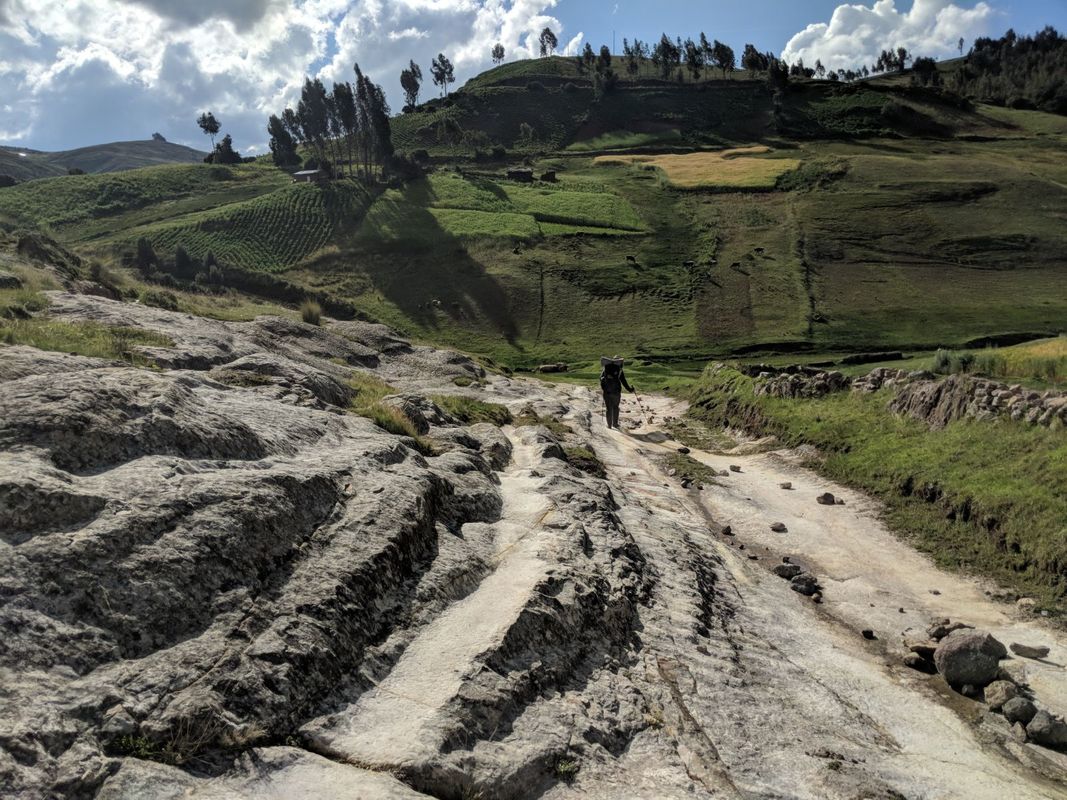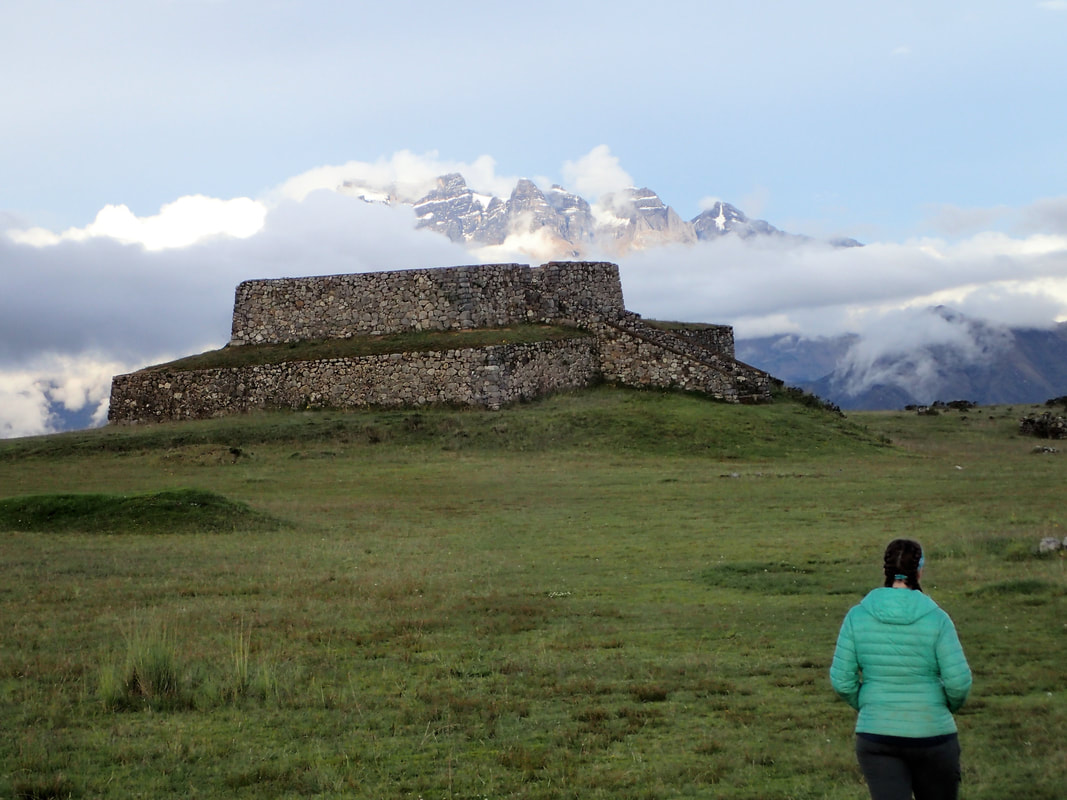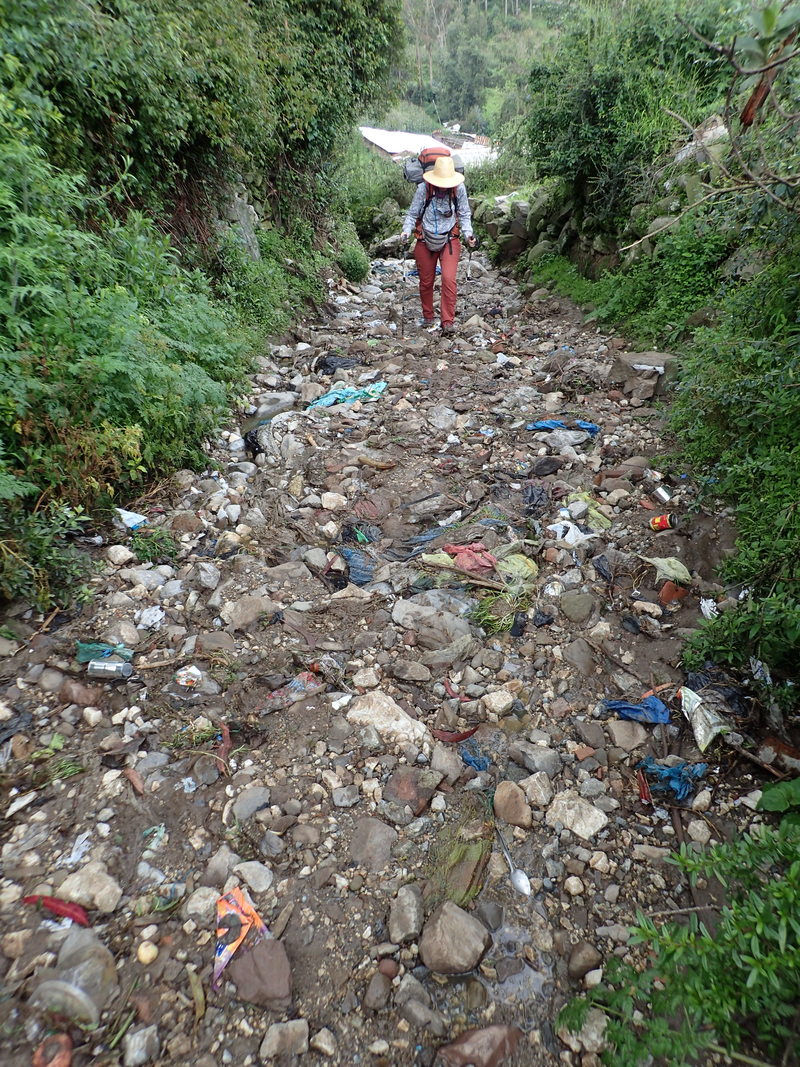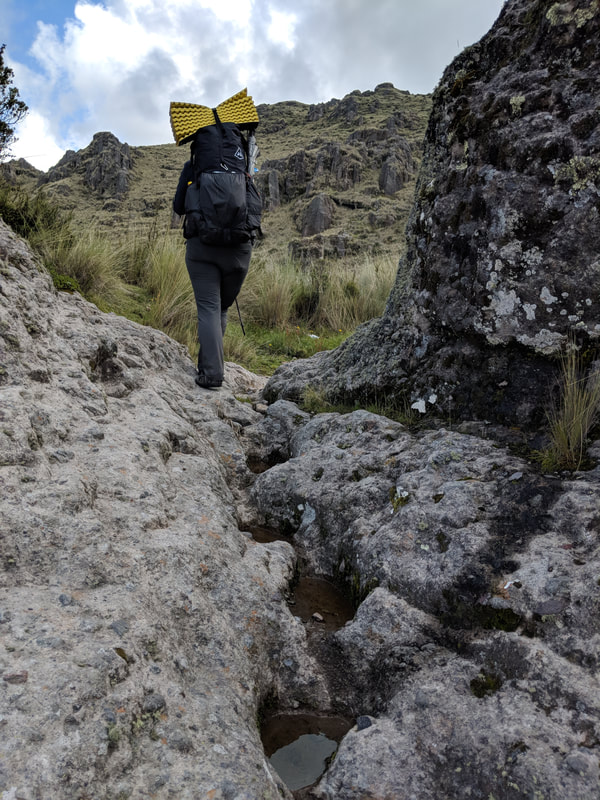
Fidgit following Qhapaq Ñan footpaths worn in the Pucará District. Soon after, we passed ways with a young family, coming back with their animals. Photo by Lauren Reed
By: Bethany HughesBethany “Fidget” Hughes and Lauren “Neon” Reed are traversing the length of the Americas by non motorized means, connecting stories of the land and its inhabitants. They are currently in central Peru. Follow them at Her Odyssey.
Neon and I stopped through a pueblo along the Qhapaq Ñan (the old Incan road system) for a quick drink. We opted for the retornable glass bottles because … of the imprints we seek to leave, contributing to plastic pollution is not one. The best kind of impact one could hope to leave are footsteps and positive impressions. In our journey of hiking across South America, we are guided both by roads and routes set by ancient cultures and also the work of a small community of modern long-distance hikers.
Chatting with the shop owner, Nancy, her friend in full Cholita dress, and her two small children, the women began relating stories about previous turistas. They said the first ones they remembered coming through were about a decade ago, a man and a woman who scared the whole town when they camped in a field nearby. No one knew who they were or where they had come from. These now-mothers would have been children then.

Fidgit approaches the Curamba ruins in Peru, one of the Inca outlook points along the 15,000+ km system of roads which they built to span the empire. Photo by Lauren Reed
It turns out, the frightening foreigners were Gregg and Deia, on their Across the Andes trek. Their GPS track was the first significant data set I found when planning the Her Odyssey route. They followed in the wake of Ian Reeves, of whom I heard stories in Argentina. The locals still shake their heads in disbelief when relating the tale of how, when the donkey he had bought died a few weeks later, he took the time and effort, and dug it a proper grave. They had never seen someone work so hard to honor a dead animal before.
We follow in the more recent tracks of Joey Shonka. He too built on the work of Gregg and Deia, leaving a more detailed GPS route and packing out water samples to contribute to the Adventure Scientists Global Microplastics study. In the deep folds of Patagonia there now circulates the story of a giant man with a massive beard who ate fish raw.

Neon hikes up a segment of the Qhapaq Ñan just outside of a town. In these areas the route is so worn into the ground that it is often viewed as a pit. Without recourse to waste disposal, such sections are frequently used as a dumping location. This does not mean South Americans necessarily produce more trash than North Americans, it is simply more evident. Photo by Bethany Hughes
In our era, the first long-walker of this particular stripe was George Meegan, who walked the full length of the Americas from 1977-1983. He later worked in Ecuador to preserve native languages which are rapidly dying. Most recently he traveled through remote regions of Iraq, meeting sheiks and observing the political shifts afoot there.
Each of these hiking predecessors left a positive mark on the world not only by their walks but also through contributions to science, culture, art, and education. Their routes and advice are resources we build on and their encouragement is fodder which propels us in perpetuating good works during our own walk: participating in the Pollinators Project, contributing route information to other long distance hikes, creating classroom material for teachers, telling the stories of strong women we encounter, and anything else we can do to pay it forward.

Fidgit climbing alongside some footwells of the Qhapaq Nan. Photo by Bethany Hughes
The impact of a hike does not stop at the end of the trail––it continues to flourish and perpetuate goodness in unexpected ways. Nancy was positive and hopeful as we returned the soda bottles and she gave us water from the tap behind her house.
“We are not afraid anymore because now we have seen
turistas on the Qhapaq Ñan,” she says.
For locals, responsible international travelers are a chance to earn a living, a reason to have pride in and a desire to preserve natural and historical resources, and an opportunity to learn and to teach how things can be done better and cleaner.
Her Odyssey Blog | Facebook | Instagram




